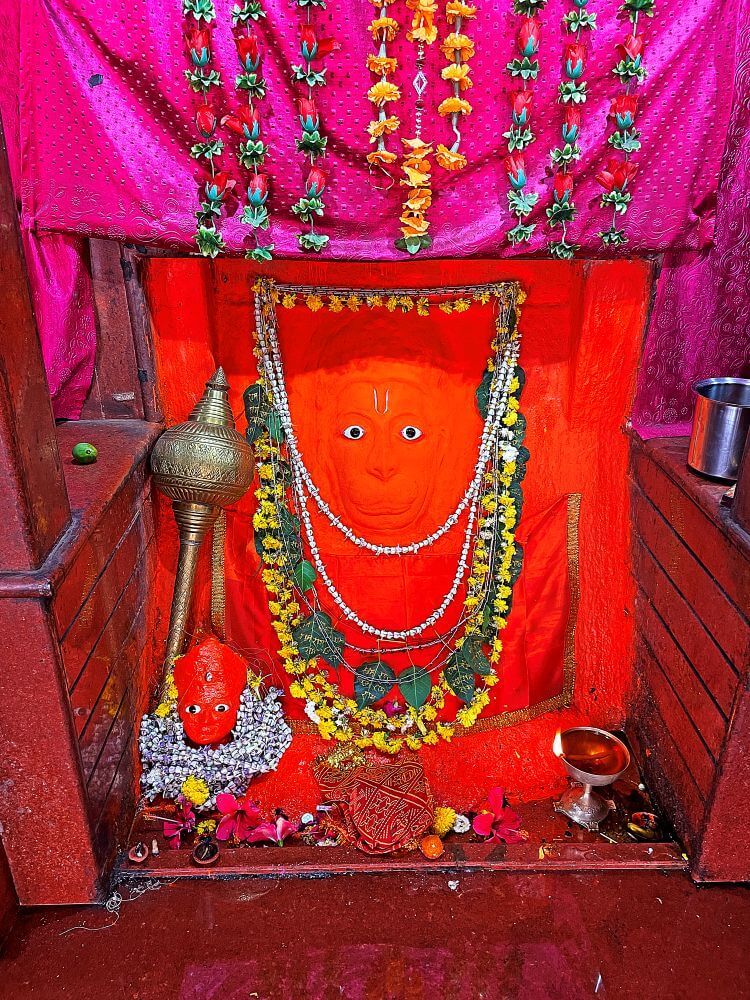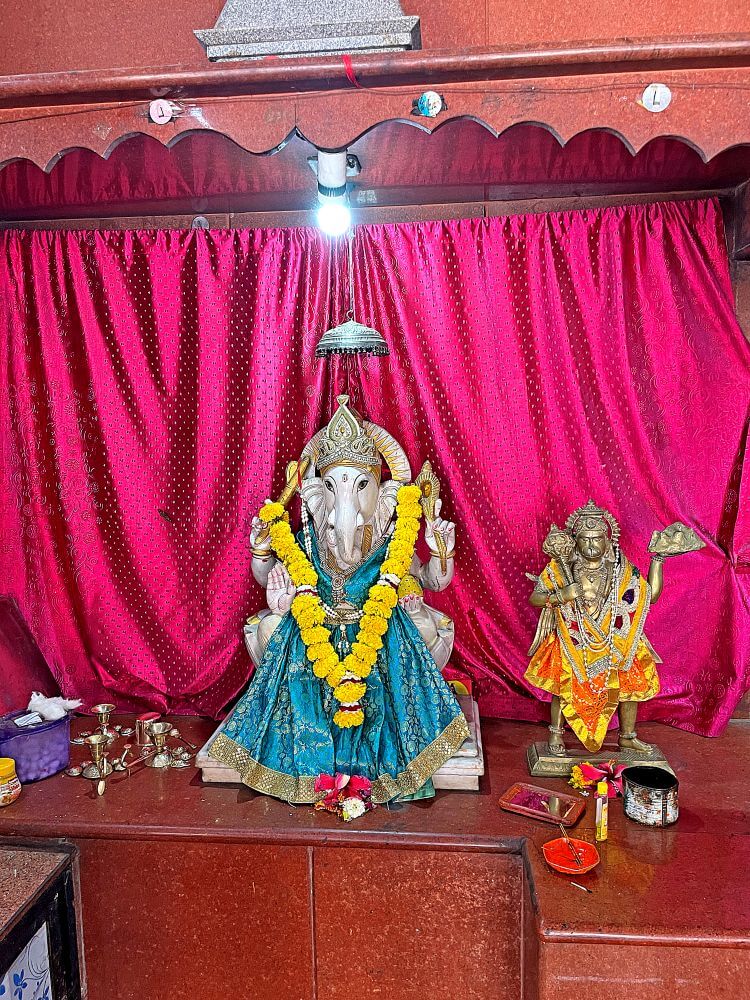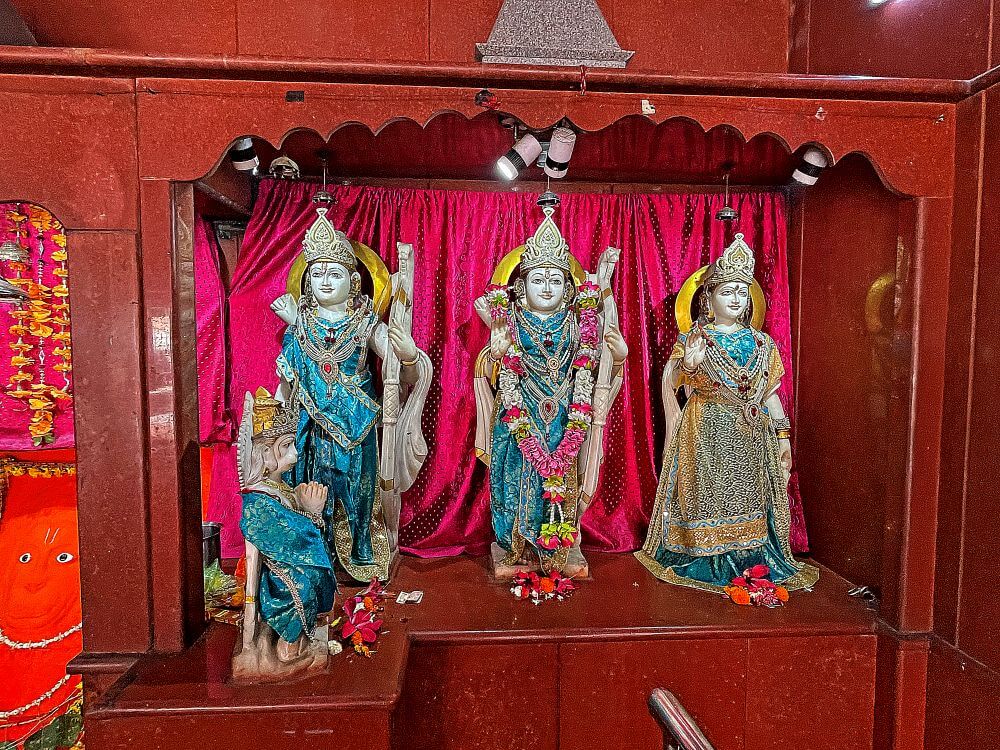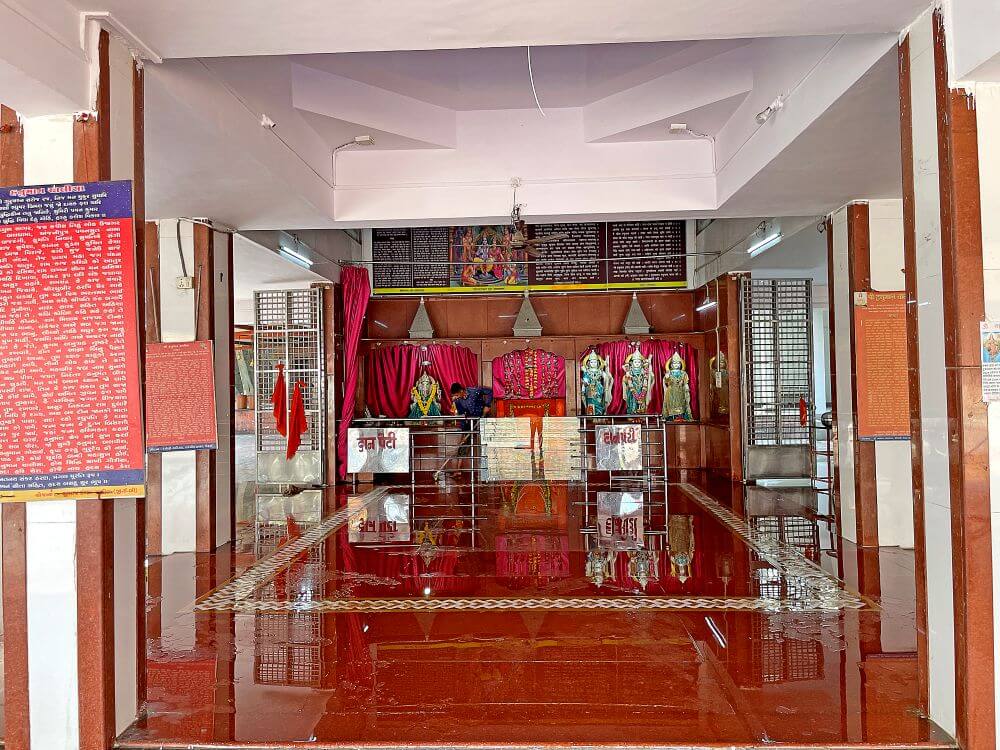 The renowned temple of Rokadiya Hanuman, known for swiftly fulfilling the wishes of devotees, is situated in Gunsada near Songadh in Gujarat’s Tapi district. Devotees firmly believe that this self-manifested Hanuman swiftly alleviates immediate monetary needs. There is a traditional practice of offering ‘Savamani’ (offerings weighing 1¼ maunds, usually sweets or items) to fulfill vows made to this deity. It is said that advance bookings for the grand feast (Mahabhandara) held during Hanuman Jayanti have been made up to the year 2037. Devotees from various parts of Gujarat, along with those from Tapi district, visit this temple.
The renowned temple of Rokadiya Hanuman, known for swiftly fulfilling the wishes of devotees, is situated in Gunsada near Songadh in Gujarat’s Tapi district. Devotees firmly believe that this self-manifested Hanuman swiftly alleviates immediate monetary needs. There is a traditional practice of offering ‘Savamani’ (offerings weighing 1¼ maunds, usually sweets or items) to fulfill vows made to this deity. It is said that advance bookings for the grand feast (Mahabhandara) held during Hanuman Jayanti have been made up to the year 2037. Devotees from various parts of Gujarat, along with those from Tapi district, visit this temple.
According to folklore, the temple’s area was previously covered by dense forest. A self-manifested idol of Hanuman appeared under an ancient banyan tree here, leading locals to start worshipping it. Many years ago, an elderly person used to serve Hanuman in this temple. He found a coin every day in the temple area. Hence, this Hanuman was named ‘Rokadia’ (one associated with cash). The temple is about five kilometers from Songadh. Historically, Songadh was part of the Baroda state, and notably, Pilajirao Gaekwad, founder of the Baroda state, established his first base in Gujarat at Songadh.
The historical context is provided in the 1936 publication ‘Shri Maharaj Sayajirao Gaekwad (Thisare) Yanche Charitra’ by Daji Nagesh Apte,  stating that Pilajirao Gaekwad served under Peshwa commander Khanderao Dabhade. Impressed by his bravery, Senapati (commander) Dabhade gave Pilajirao the Sanad (charter) of Page (cavalry) and asked him to go and settle in Navapur. However, Navapur was then controlled by the Sardar Kadambande, who opposed Pilajirao. Consequently, Pilajirao requested permission to settle ten kos beyond Navapur in dense forests inhabited by Mevasi Bhil tribes. Upon receiving permission, Pilajirao established his camp in Songadh around 1719 and captured the fort from the Mevasi Bhil. He administered his rule from this fort for nearly 9-10 years.
stating that Pilajirao Gaekwad served under Peshwa commander Khanderao Dabhade. Impressed by his bravery, Senapati (commander) Dabhade gave Pilajirao the Sanad (charter) of Page (cavalry) and asked him to go and settle in Navapur. However, Navapur was then controlled by the Sardar Kadambande, who opposed Pilajirao. Consequently, Pilajirao requested permission to settle ten kos beyond Navapur in dense forests inhabited by Mevasi Bhil tribes. Upon receiving permission, Pilajirao established his camp in Songadh around 1719 and captured the fort from the Mevasi Bhil. He administered his rule from this fort for nearly 9-10 years.
Originally a small shrine near Songadh, Rokadiya Hanuman Temple underwent several renovations over time, with a significant renovation in 2016 giving it its current grand appearance. During this renovation, idols of Ramdarbar, Ganesha, and a Shivling in the nearby Omkareshwar Mahadev temple were consecrated.
Spread over a large area, the temple features an entrance arch with Hanuman’s idol in its center. A paved pathway leads from the entrance to the temple. The temple is situated a few feet below ground level, accessed by descending 13 steps through an elevated entrance. A spacious open hall (Sabhamandap) with a dome-shaped pinnacle and marble flooring leads directly to an open sanctum (Garbhagriha) without a front wall or door, topped with a tall spire in the Urushrung architectural style.
Within the sanctum, Rokadiya Hanuman’s saffron-smeared idol sits elevated on a wooden platform. Notably, Hanuman is depicted in a seated posture, with only the face visible due to drapery covering the lower body. A large silver mace and a saffron-colored mask lie to the idol’s left. Nearby stands a marble idol of Ganesha and a brass idol of Hanuman carrying the Dronagiri mountain. On the right side, marble idols of Lord Ram, Lakshman, and Seeta adorned in clothes and jewelry are placed. A smaller idol of Hanuman in a Namaskar Mudra (a posture of salutation) is also present.
Behind this temple is the place of manifestation of the self-manifested idol of Hanuman. There is an ancient Banyan tree, and it is said that the idol of Hanuman was found here. A colorful cloth is wrapped around a horizontal branch of this tree. Devotees tie a coconut garland to the trunk of this tree as a vow. There is also a small temple of Hanuman to the left of this tree. Also, a Shila (stone) of Shani is installed on a platform built near the boundary wall.
There is an ancient Banyan tree, and it is said that the idol of Hanuman was found here. A colorful cloth is wrapped around a horizontal branch of this tree. Devotees tie a coconut garland to the trunk of this tree as a vow. There is also a small temple of Hanuman to the left of this tree. Also, a Shila (stone) of Shani is installed on a platform built near the boundary wall.
To the left of the Rokadia Hanuman Temple is the Omkareshwar Mahadev Temple on a high platform. In the Mukhmandap (entrance hall) of this temple, there is a small marble idol of Nandi and a tortoise in front of it. In the sanctum sanctorum, there is a Shivalinga with a serpent holding a canopy over it. The Shivlinga is being anointed from the Galantika (a spout) above it. There is an idol of Parvati Mata (Goddess Parvati) in the niche on the wall behind the Shivlinga.
The temple complex is filled with devotees on days like Hanuman Jayanti, Ram Navami, Chaturthi, Shravani Somvar, and Shivratri. During this time, various religious programs as well as Mahabhandara are organized in the temple. For this purpose, a large mandap (pavilion) has been built on the right side of the temple.
